Gonzalez-Rodiles APWH Unit 5
5.0(1)
5.0(1)
Card Sorting
1/31
Earn XP
Description and Tags
Study Analytics
Name | Mastery | Learn | Test | Matching | Spaced |
|---|
No study sessions yet.
32 Terms
1
New cards
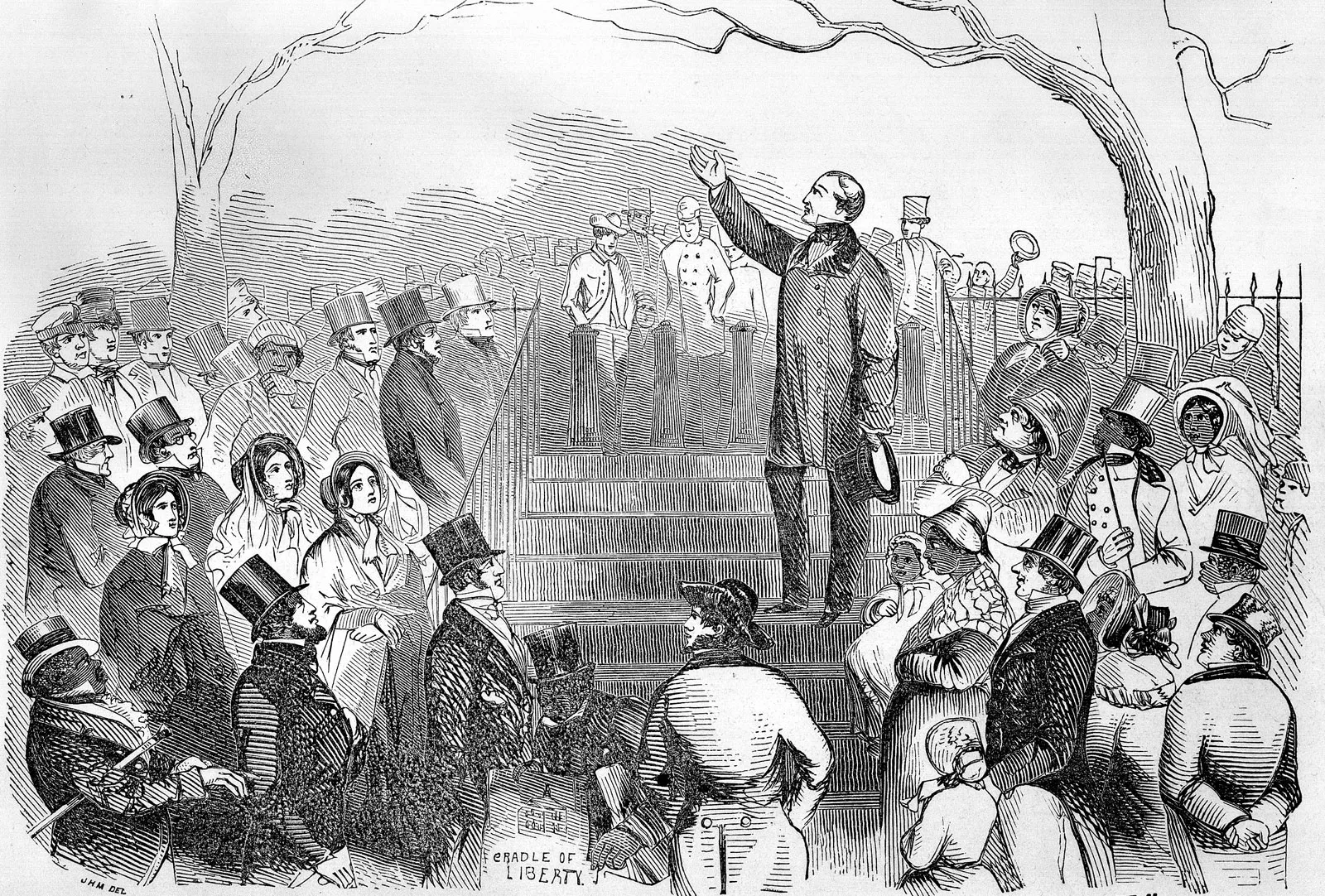
Abolition Movement 5.1
Reform movement to end the Atlantic slave trade and free all enslaved people gained followers in the 18th century.
LO 2) Movement to reform was a cause for the various revolutions that (in the Haitian) resulted in a black-led country and the equality of rights for all citizens.
LO 2) Movement to reform was a cause for the various revolutions that (in the Haitian) resulted in a black-led country and the equality of rights for all citizens.
2
New cards

Empiricism 5.1
The belief that knowledge comes from sensed experience, from what you observe through your experience, including through experiments.
LO 1) Used logic and reasoning over religious texts and traditions. People questioned their past traditions.
LO 1) Used logic and reasoning over religious texts and traditions. People questioned their past traditions.
3
New cards

Enlightenment 5.1
As empires expanded and trade routes led to more interactions, and intellectuals in the 17th and 18th centuries there was a shift where people began to emphasize reason over tradition and individualism over community values.
LO 1) Enlightenment ideals inspired revolutions and conflicts which allowed nations to gain more power and question past traditions making them more skeptical.
LO 1) Enlightenment ideals inspired revolutions and conflicts which allowed nations to gain more power and question past traditions making them more skeptical.
4
New cards
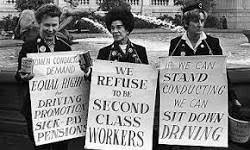
Suffrage Movement 5.1
Feminist movement that fought for women’s right to vote in the 18th to early 20th century when women won the full right to vote in 1928.
LO 2) Feminism starts a wave that will eventually lead to women gaining more rights and a part in society and government positions.
LO 2) Feminism starts a wave that will eventually lead to women gaining more rights and a part in society and government positions.
5
New cards
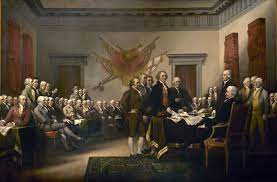
American Revolutions 5.2
Enlightenment ideals, economic ideas (free market ideas vs English mercantilism), American colonists becoming increasingly independent politically caused the American colonists to revolt against British rule. Won with economic help from France. They wrote the Declaration of Independence in 1776 which had roots in Enlightenment Ideals; ex. John Locke’s “Unalienable rights.”
LO 3) Enlightenment ideals, nationalism, and increased political independency caused revolution that resulted in the Declaration of Independence and the independence of America from Britain.
LO 3) Enlightenment ideals, nationalism, and increased political independency caused revolution that resulted in the Declaration of Independence and the independence of America from Britain.
6
New cards

Bolivar Revolutions 5.2
In many parts of South America, desire for Independence from Spain grew among the creole class (who refused to support the mestizos, indigenous people, and mulattos). Many creoles (ex. Simon Bolivar) pushed for Enlightenment Ideals in Latin America. Resulted in constitutions from newly independent countries in Latin America legally ending some social distinctions and abolish slavery. Little to no change for women.
LO 3) Class descrimintions (peninsulares given government positions over creoles) increased revolutionary ideas in Latin America resulting in the the creoles rising in political power.
LO 3) Class descrimintions (peninsulares given government positions over creoles) increased revolutionary ideas in Latin America resulting in the the creoles rising in political power.
7
New cards
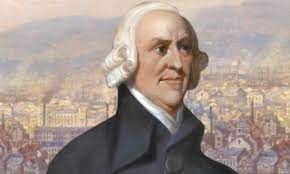
Classical Liberalism 5.2
The Philosophy of John Locke and other 17th and 18th century advocates of the protection of individual rights and liberties by limiting government power. It emphasizes freedom, democracy, and the importance of the individual.
LO 3) Enlightenment ideals like this one inspired revolutions like the Haitian, French, and Latin American revolutions because it emphasizes individual rights.
LO 3) Enlightenment ideals like this one inspired revolutions like the Haitian, French, and Latin American revolutions because it emphasizes individual rights.
8
New cards
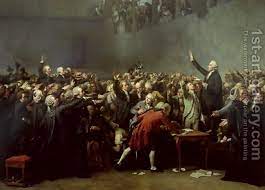
French Revolution 5.2
Revolutionary ideals (liberté liberty, égalité equality, et fraternité fraternity) popularized throughout Europe in writings of the philosophes. France spent more than it was taking in; financing series of wars, economic aid to American Revolution. To address the financial situation, the French government held a meeting of Estates-General which caused commoners to break away a form a new body, the National Assembly because of inequality in voting. Crowd storms Bastille (prison that symbolized abuses of monarchy and corrupt aristocracy) in Paris. Abolition of feudalism, adoption of the Declaration of the Rights of Man (declaring basic human rights). Reign of Terror
LO 3) Financial issues and class discrimination inspired the commoners to start the National Assembly and revolt against the Absolutist government resulting in the abolished fuedalism and adoption of a limited monarchy.
LO 3) Financial issues and class discrimination inspired the commoners to start the National Assembly and revolt against the Absolutist government resulting in the abolished fuedalism and adoption of a limited monarchy.
9
New cards
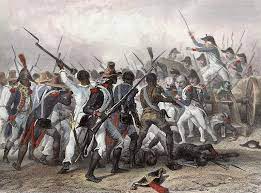
Haitian Revolution 5.2
At the end of the 18th century in Haiti, slaves revolted against their white masters. The revolt was soon joined by the escaped slaves called Maroons. Former slave Toussaint L’Ouverture (led by the examples of the American and French revolutions) joined the revolt. Constitution that granted equality and citizenship to all residents. Land reform; plantations were divided up with lands being distributed among formerly enslaved and free black people. Haiti became the first country in Latin-America to win its independence and the first black-led country in the Western Hemisphere.
LO 3) Racial discrimination due to slavery (slaves had no rights) and external factors like slaves taking inspiration from the French Revolution all contributed to the slaves rising up and building their own government and state.
LO 3) Racial discrimination due to slavery (slaves had no rights) and external factors like slaves taking inspiration from the French Revolution all contributed to the slaves rising up and building their own government and state.
10
New cards
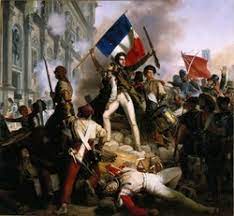
Nationalism 5.2
The loyalty that people feel to others with common culture, language, ethnicity, and/or history. This idea increased in France and other areas of Europe and in the Americas.
LO 3) Unifyied states of similar ethnicities and languages like Germany and Italy and breaking apart states of different ethnicities and languages like Greek war of independence within the Ottoman Empire.
LO 3) Unifyied states of similar ethnicities and languages like Germany and Italy and breaking apart states of different ethnicities and languages like Greek war of independence within the Ottoman Empire.
11
New cards
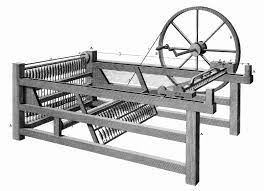
Causes of Industrialization 5.3
Agricultural Revolution (increased productivity, crop rotation, seed drill device, populations grew) improved healthcare, (infant mortality rates declined and people lived longer), more ppl available to work in factories and provide a market for manufactured goods. Growth of technology: spinning jenny (cottage industry→ machines/factories), water frame (factories run by water)
LO 4) Britian having waterways that they could easily transport raw and manufactured goods in and out their nation and being located ontop of a large coal deposit caused their Industrial Revolution that eventually spread across the globe.
LO 4) Britian having waterways that they could easily transport raw and manufactured goods in and out their nation and being located ontop of a large coal deposit caused their Industrial Revolution that eventually spread across the globe.
12
New cards

Factory System 5.3
The father of the system is Richard Arkwright. THis is when factories employ large numbers of workers and power-driven machines to mass produce goods
LO 4) The system allowed for urbanization and migration of people to more factory-dense areas affecting the global economy by having more people fill jobs in factories.
LO 4) The system allowed for urbanization and migration of people to more factory-dense areas affecting the global economy by having more people fill jobs in factories.
13
New cards

Industrialization 5.4
A society’s transition away from an agricultural society and towards manufacturing/factories/industry. (Less farming, more factories)
LO 5) It caused the different modes and locations of production to stray farther from agriculture and rely more on manufacturing and allowed factories to be located anywhere.
LO 5) It caused the different modes and locations of production to stray farther from agriculture and rely more on manufacturing and allowed factories to be located anywhere.
14
New cards
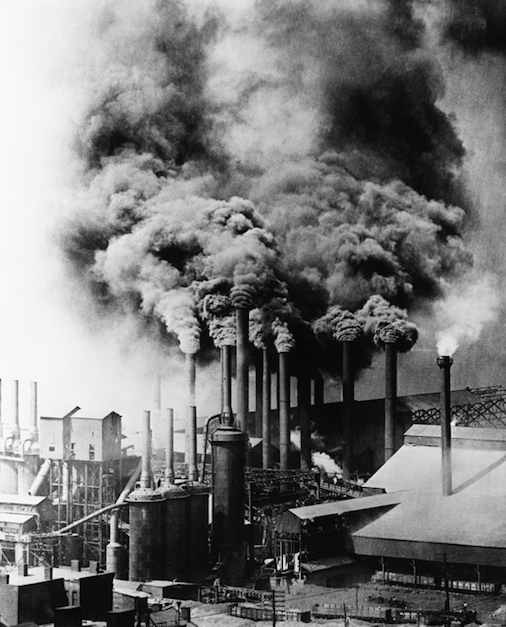
Fossil Fuels Revolution 5.5
New machinery benefitted from a new power source, one that was more mobile than the water frame. Industrialization based on fossil-fuel energy, steam engines, and coal.
LO 6) Fossil Fuels allowed factories to be located anywhere within a nation (they were powered by fossil fuels).
LO 6) Fossil Fuels allowed factories to be located anywhere within a nation (they were powered by fossil fuels).
15
New cards

Industrial Communication 5.5
The development of electricity and electronics over years helped lead to important developments in communication technology.
Telephone→ late 19th century, Alexander Graham Bell (Thomas Edison made a better version)
Radio- 20th century, Gugliemo Marconi, Italian Physicist
LO 6) Economy grew with the integration of electricity and electronics into the economy.
Telephone→ late 19th century, Alexander Graham Bell (Thomas Edison made a better version)
Radio- 20th century, Gugliemo Marconi, Italian Physicist
LO 6) Economy grew with the integration of electricity and electronics into the economy.
16
New cards
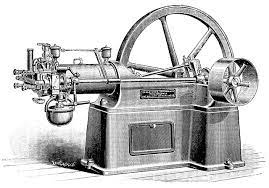
Internal Combustion Engine 5.5
An engine that generates motive power by the burning of gasoline, oil, or other fuel with air inside the engine
LO 6) This new technology allowed for easier travel therefore migrations since it powered many new travel technologies like ships which made travel easier and faster therefore immigrants can migrate easier and work in factories shaping economic production.
LO 6) This new technology allowed for easier travel therefore migrations since it powered many new travel technologies like ships which made travel easier and faster therefore immigrants can migrate easier and work in factories shaping economic production.
17
New cards
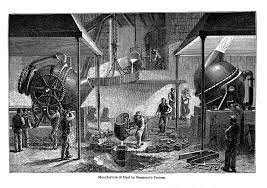
Second Industrial Revolution 5.5
Key players in the late 19th century revolution were the United States, Great Britain, and Germany. Innovations of revolution were in steel, chemicals, precision machinery, and electronics
LO 6) New innovations and machinery affected what was produced and produced more in the economy.
LO 6) New innovations and machinery affected what was produced and produced more in the economy.
18
New cards

Steam Engine 5.5
Engine powered by coal. Made by James Watt. Provided an inexpensive way to harness coal power to create steam, which in turn generated energy for machinery in textile factories.
LO 6) Many factories were powered by the steam engine so factories no longer had to be near rivers making factory production more convenient.
LO 6) Many factories were powered by the steam engine so factories no longer had to be near rivers making factory production more convenient.
19
New cards
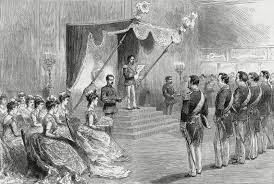
Meiji Restoration 5.6
A chain of events that restored practical imperial rule to Japan in the late 19th century under Emperor Meiji. (Shogun overthrew, power to emperor)
LO 7) A cause for Japan opening their trade to the rest of the world was because the United States threatened them with violence and resulted in Japan startin to rapidly Industrialize and therefore people moved to places where work was available causing urbanization.
LO 7) A cause for Japan opening their trade to the rest of the world was because the United States threatened them with violence and resulted in Japan startin to rapidly Industrialize and therefore people moved to places where work was available causing urbanization.
20
New cards

Muhammad Ali 5.6
Ottoman leader during the 19th century. Because of his power, he was able to act somewhat independently of the sultan. Began own reforms in Egypt: country’s military on European model, schools, military officers sent to France to be education, official newspaper, taxes peasants at a super high rate, pushed Egypt to industrialize, textile factories built, facilities to build ships for the Egyptian navy.
LO 7) Egypt and ottoman empire felt pressure to industrialize because they were being pressure by Russia trying to expand at the expense of the Ottoman empire resulting in Ali building factories and the rise of the factory system for the economy in Egypt.
LO 7) Egypt and ottoman empire felt pressure to industrialize because they were being pressure by Russia trying to expand at the expense of the Ottoman empire resulting in Ali building factories and the rise of the factory system for the economy in Egypt.
21
New cards

Capitalism 5.7
Economic theory by Adam Smith that believes there is an unlimited amount of “stuff,” the government shouldn’t be involved in the economy and free trade.
LO 8) Developed as a part of the Enlightenment and contributed to change with the integration of free market ideas.
LO 8) Developed as a part of the Enlightenment and contributed to change with the integration of free market ideas.
22
New cards
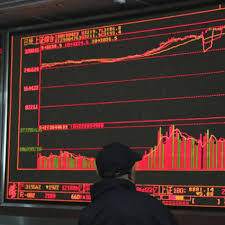
Stock Market 5.7
Individuals who buy partial ownership directly from the company when it is formed or later through a stock market
LO 8) People migrated towards where the stock markets were located to make more money. Bessemer Process (more efficient way to produce steel) gained monopoly in Germany steel industry.
LO 8) People migrated towards where the stock markets were located to make more money. Bessemer Process (more efficient way to produce steel) gained monopoly in Germany steel industry.
23
New cards
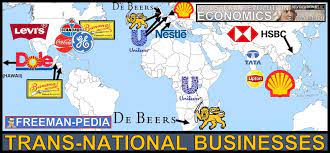
Transnational Business 5.7
Companies that operated cross national boundaries
LO 8) Honk kong and Shanghai Banking Corporation (British owned) opened in its colony of Hong Kong and the Unilever corporation (British and dutch owned) had factories in austrialia, switzerlad, and the US. These businesses gained wealth and influence on a large scale.
LO 8) Honk kong and Shanghai Banking Corporation (British owned) opened in its colony of Hong Kong and the Unilever corporation (British and dutch owned) had factories in austrialia, switzerlad, and the US. These businesses gained wealth and influence on a large scale.
24
New cards
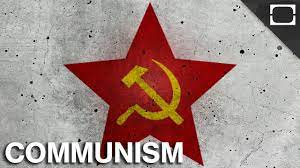
Communism 5.8
Socialism replaces capitalism, then socialism is replaced by a final stage of economic development where all class distinctions would end. Has a goal of eliminating socioeconomic class struggles by creating a classless society in which everyone shares the benefits of labor and the state controls property and wealth
LO 9) Communism grew out of socialist movements because socialists blamed capitalism for the bad treatment of the middle class (the middle class working in factories under horrible conditions).
LO 9) Communism grew out of socialist movements because socialists blamed capitalism for the bad treatment of the middle class (the middle class working in factories under horrible conditions).
25
New cards
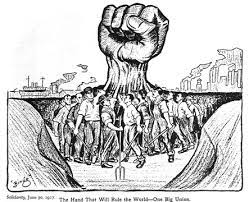
Labor Unions 5.8
Workers, as a response to low pay and harsh conditions, made organizations of workers that advocated for the right to bargain with employers and put the resulting agreements in a contract.
LO 9) Caused because of the harsh conditions and low wages and resulted in efforts to stop child labor, give health benefits and give help to injured or retired workers.
LO 9) Caused because of the harsh conditions and low wages and resulted in efforts to stop child labor, give health benefits and give help to injured or retired workers.
26
New cards
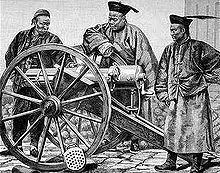
Self-Strengthening Movement 5.8
China under the Qing Dynasty felt pressure to modernize. It’s major reform effort of the late 19th century is called this. It developed as a way for the government to face the internal and external problems confronting China, in the hope to strengthen China in its competition with foreign powers by advancing its military technology and readiness.
LO 9) Caused by pressure to industrialize and modernize because the rest of the world was gaining more military power with guns being produced in factories resulting in successfully preserving China for another half century.
LO 9) Caused by pressure to industrialize and modernize because the rest of the world was gaining more military power with guns being produced in factories resulting in successfully preserving China for another half century.
27
New cards
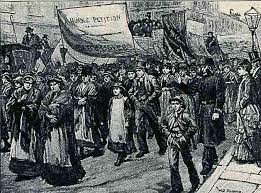
Socialism 5.8
Any political or economic theory of social organization that says the community, rather than individuals, should own and manage the means of production, distribution, and exchange.
LO 9) After WW1, Russia went into great debt. Since people were suffering a lot, so people wanted equal money distribution and therefore socialism which in turn kind of prevented Russia from taking part in the great depression.
LO 9) After WW1, Russia went into great debt. Since people were suffering a lot, so people wanted equal money distribution and therefore socialism which in turn kind of prevented Russia from taking part in the great depression.
28
New cards

Taiping Rebellion 5.8
A peasant uprising during the mid 19th century whose leaders largely rejected Confucian ideals.
LO 9) Caused by Hong Xiuquan who failed the civil service exam a third time and resulted in the death of 20 million people and the weakening of the Qing Dynasty because they couldn’t get an effective hold over the country after the rebellion.
LO 9) Caused by Hong Xiuquan who failed the civil service exam a third time and resulted in the death of 20 million people and the weakening of the Qing Dynasty because they couldn’t get an effective hold over the country after the rebellion.
29
New cards
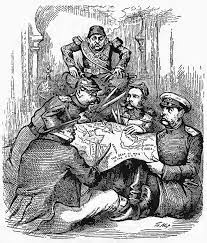
Tanzimat Reforms 5.8
A set of reforms in the Ottoman empire to preserve the already weakening state during the mid 19th century.
LO 9) Caused by the Ottoman empire feeling pressure to modernize from powerful European states like Russia pushing on their borders. This resulted in many changes like new legal systems and secular education (no longer using ulama)
LO 9) Caused by the Ottoman empire feeling pressure to modernize from powerful European states like Russia pushing on their borders. This resulted in many changes like new legal systems and secular education (no longer using ulama)
30
New cards
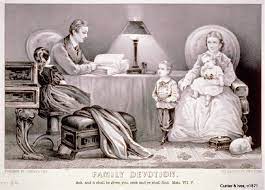
Cult of Domesticity 5.9
A common belief in the 20th century that women should not work outside the home and that they should stay at home and take care of the family
LO 10) With women working in factories, many people started the belief that women should stay at home while their husbands work changing societies’ view of women with a higher standard of living.
LO 10) With women working in factories, many people started the belief that women should stay at home while their husbands work changing societies’ view of women with a higher standard of living.
31
New cards
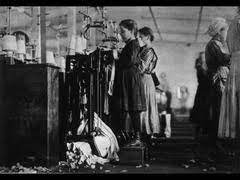
New Social Classes 5.9
Bottom of the rungs of the social hierarchy were those who labored in factories/coal mines known as the working class. Workers needed fewer skills than before, so managers saw them as easily replaceable. Competition for jobs kept wages low.
LO 10) Industrialization brought new social classes to the social hierarchy: Middle class & Working class.
LO 10) Industrialization brought new social classes to the social hierarchy: Middle class & Working class.
32
New cards

Urbanization 5.9
A social process where cities become more populous and become more urban (city-like)
LO 10) Made standards of living better for the middle class but worse for the industrial working class (tenements).
LO 10) Made standards of living better for the middle class but worse for the industrial working class (tenements).